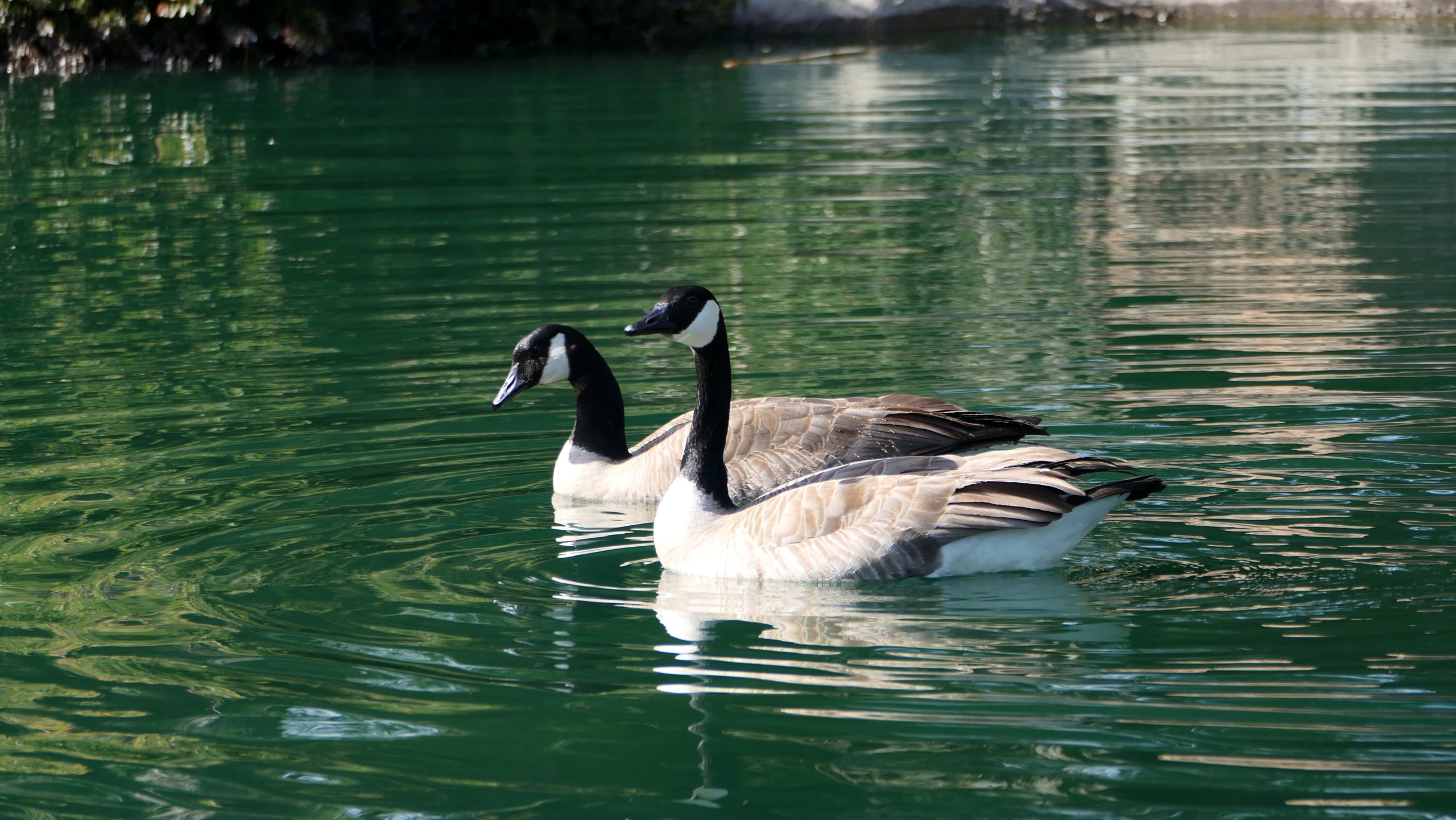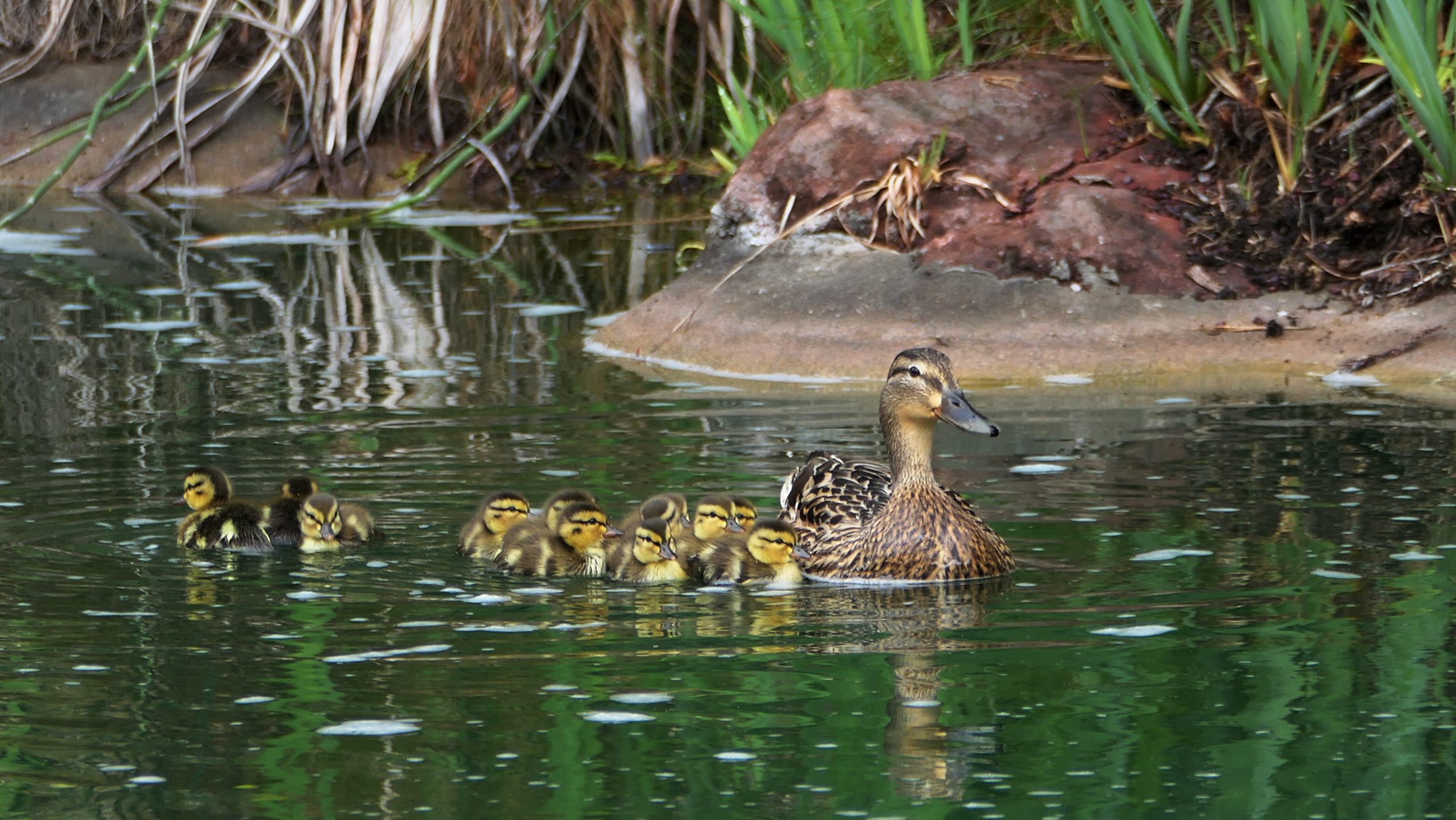Japanese gardens are iconic for their unique character and beauty. Explore the map below to find out more about the history and culture behind our Japanese garden.

Waterfall
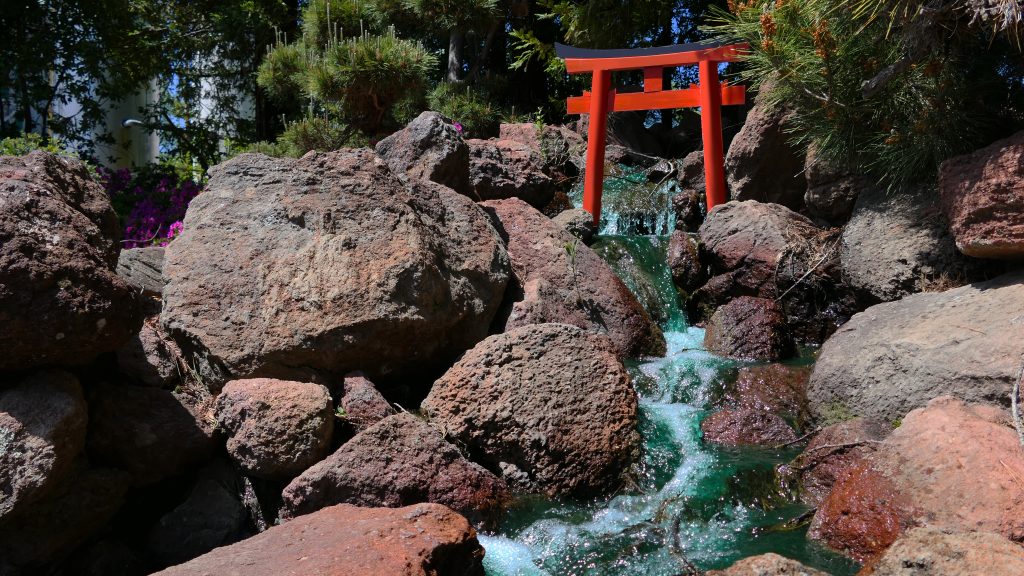
Japanese gardens are often meant to be an encapsulation of nature, and representations of the many streams and waterfalls that grace Japan’s countryside are a common element. Moving water features help bring energy and motion to the otherwise still water of the garden but are also seen as having spiritual meaning as well.
Waterfalls represent purification and a source of life and vitality, and as they are always flowing but also locked in one place, they are also taken as dual symbols of permanence and change.
Koi Fish

Koi fish were initially introduced to Japan from China as common carp over a thousand years ago and have since woven themselves into Japanese history and culture. Initially kept for use as food and to eat the pests in rice fields, koi eventually began to be bred for their bright colors, resulting in the beautiful jewel-like fish we know today.
The importance of koi fish in Japanese culture originates from an old Chinese myth where it was said that a carp that managed to swim up the waterfall in the legend would transform into a dragon. Because of this, koi fish became symbols of prosperity, perseverance, and success, and can be seen throughout Japanese art and culture.
Years of predation by the local birds and otters have weeded out most of the colorful ones, but if you’re lucky, you still might catch a glimpse of silver or gold flashing in the depths.
Pond
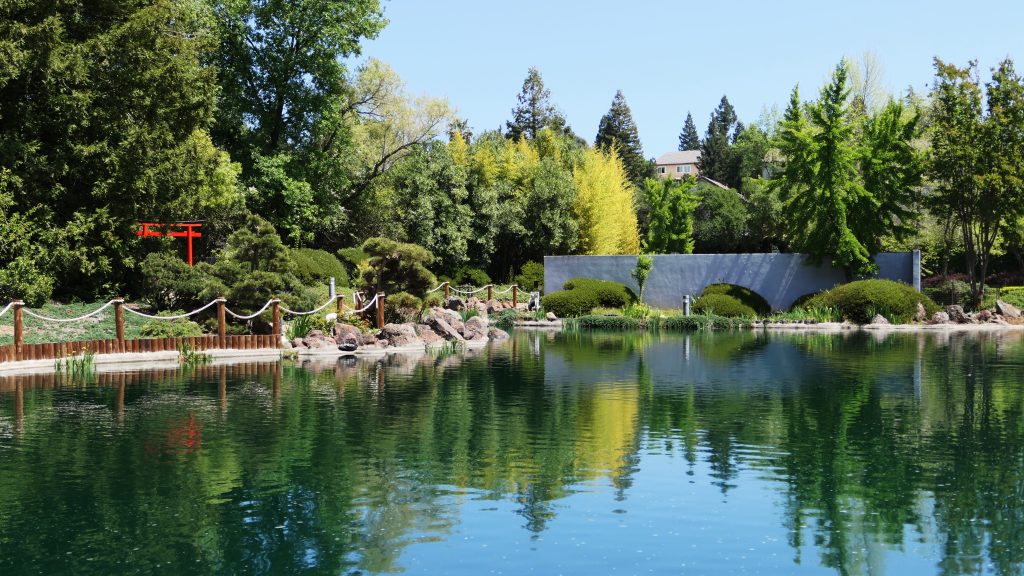
Japanese gardens can broadly be split into three different types: pond gardens, rock gardens, and teahouse gardens. As you might expect, the pond is often the focal point of a pond garden, where it helps bring a sense of calm and harmony to the landscape.
As Japanese gardens are often meant to be the world in miniature, ponds are usually intended to signify a lake or ocean, and an island placed within it might represent a spiritual realm.
The sky and surroundings reflected on the water’s surface is always changing - a reminder of the fleeting nature of the world.
Local Wildlife
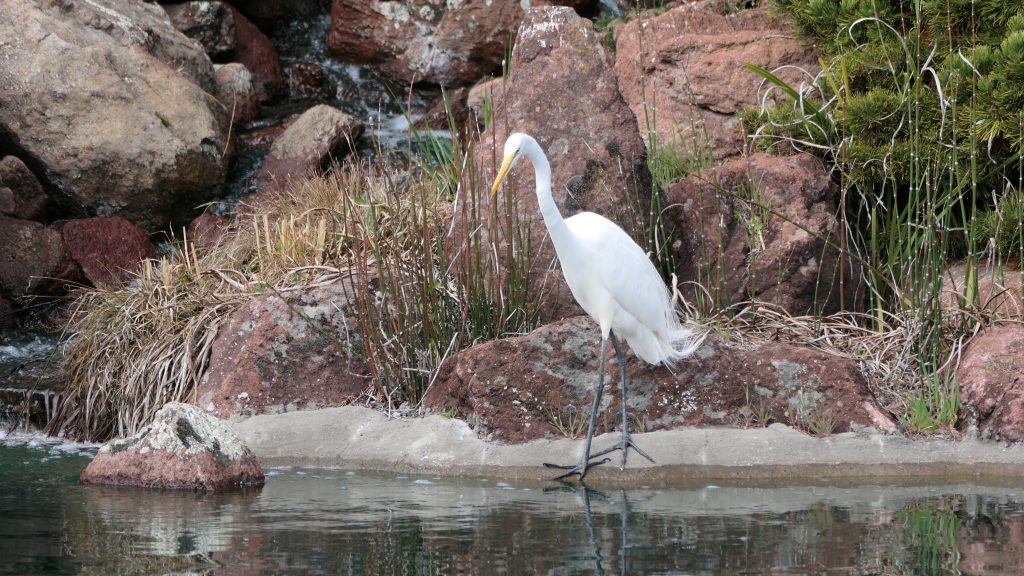
Our garden is a natural draw for many different types of local wildlife. Birds are a very common sight, lured by the presence of water and food:
Ducks and geese are regular visitors during the migratory season, stopping by our pond for food and a sheltered place to rest.
The fish in our pond prove irresistible to great egrets, which can often be seen stalking them in the pond shallows. Though our brewmaster does his best to chase them away, they remain undeterred…
During the warm months, turkeys often roam our lot foraging for food and can be found with a gaggle of chicks in tow during the breeding season.
If you’re incredibly lucky, you might catch a glimpse of one of the local deer. A rare visitor to our garden, they sometimes jump the fence in search of something to eat.
Rock Garden
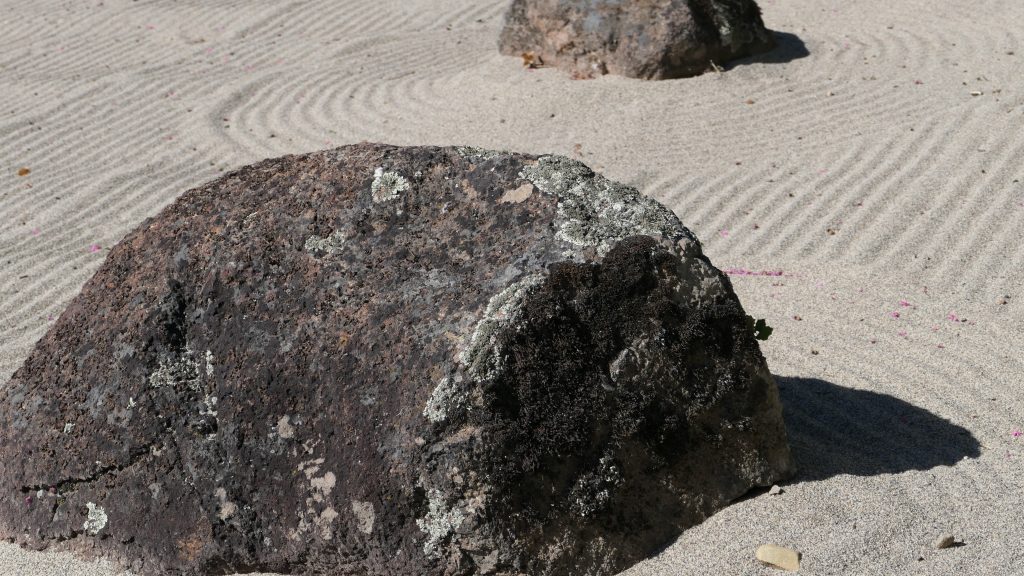
Also sometimes referred to in English as Zen gardens, Japanese rock gardens evoke the image of islands in an ocean. Boulders are carefully selected and placed to represent islands, and sand is used to represent water. The sand is then raked to mimic the pattern of waves and ripples on the water’s surface.
Bamboo Grove

Bamboo hedges are a common feature of Japanese gardens. Their fast-growing and elegant, upright nature make them a natural choice for living screens. Along with pine trees and the ume plum flower, bamboo is one of the three traditional plants used in Japanese new year’s decorations, where it represents prosperity and growth.
Our little patch of bamboo hearkens back to the famous Arashiyama Bamboo Grove in Kyoto with its towering forest of giant bamboo stalks that rustle gently in the wind, although ours is a fair bit smaller in size and stature.
Sakura
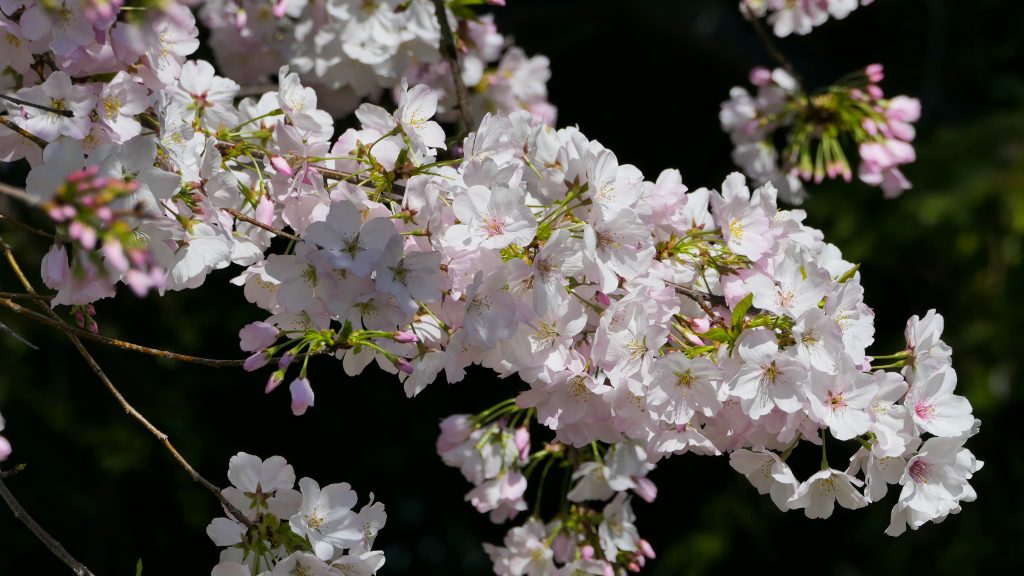
Perhaps the most iconic symbol of Japanese culture is the sakura or cherry blossom tree. Blooming for only a few brief weeks in spring, cherry blossoms symbolize not only hope and new beginnings but also the transience and impermanence of life.
A popular activity during spring is hanami, or flower-viewing, where people take advantage of the warming weather to hold picnics under the blooming sakura. The blooms are so eagerly anticipated in Japan that every year a bloom forecast (like a weather forecast) is made to show when the trees in each region will bloom.
The sakura in our garden are of a variety called Somei Yoshino – one of the most popular cultivars in Japan. Each Somei Yoshino is a clone of the original tree that first grew over 250 years ago.
Torii Gate
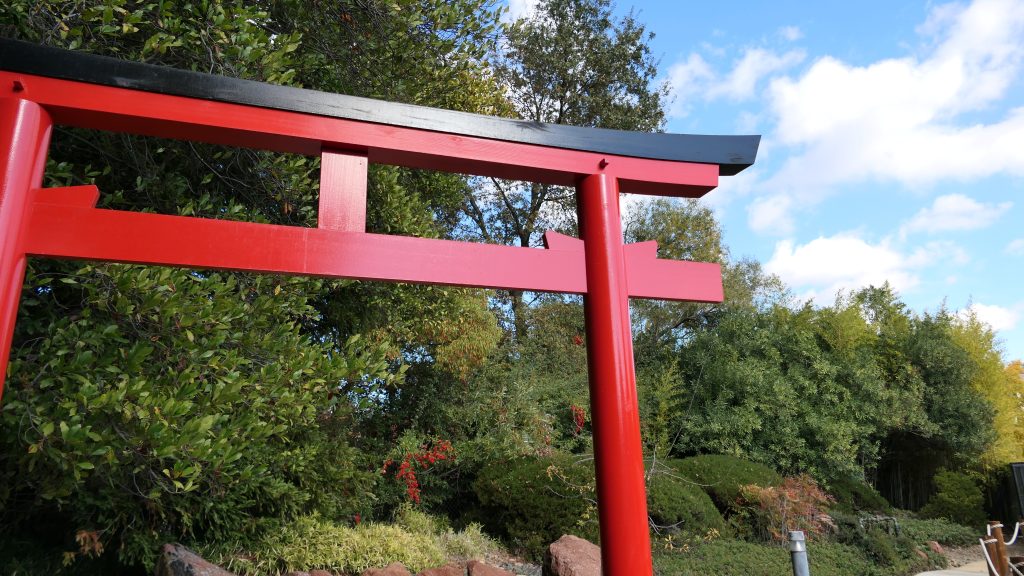
Atop of the garden’s mountain sits a torii or traditional Japanese gate. These are closely associated with Shinto beliefs and can be found at the entrance to shrines and other places of spiritual importance, where they mark the transition from the mundane to the sacred. Passing through the torii means entering the realm of the kami, or gods.
When passing through a torii, it is traditional to first stop and give a slight bow as a sign of respect to the spirits whose realm we are entering. It is also rude to walk through the center of the gateway, since that path is reserved for the kami. Instead, most people will pass either slightly to the right or left of the center.
Our torii marks the entrance to the garden’s mountain and the realm where its kami resides.
Pine Trees

The Japanese black pine is a common fixture of Japanese gardens. Its dignified, evergreen growth habit earns it a place among the traditional Japanese new year’s decorations alongside bamboo and ume plum flowers, where it symbolizes vitality and longevity.
In addition to being a traditional choice for Japanese gardens, the black pine’s drought tolerance makes it an excellent choice for the Central Valley.
Groundcover
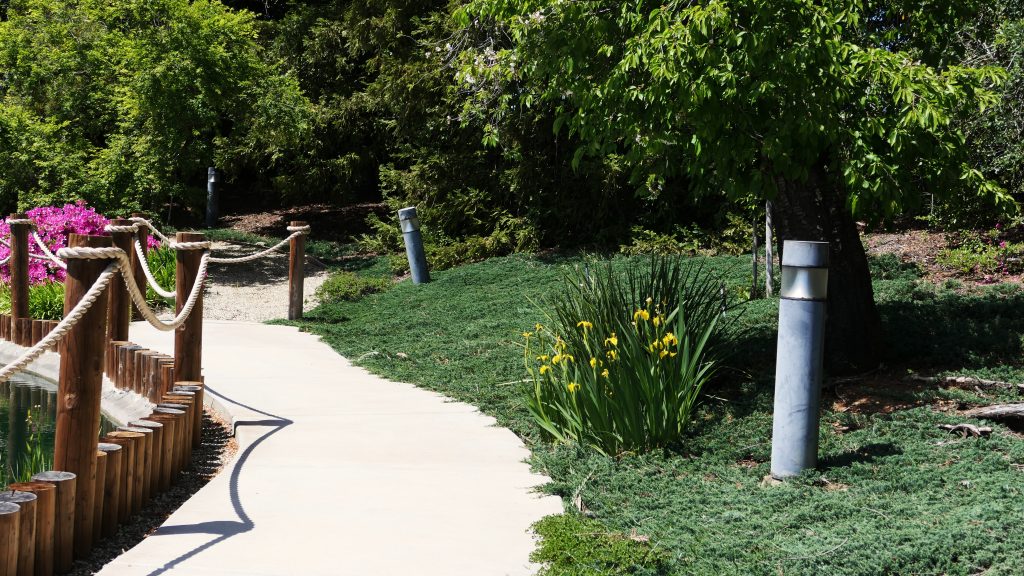
A unique groundcover often seen in Japanese gardens is moss. Fed by Japan’s summer humidity and rains, some gardens feature centuries-old carpets of vibrant, lush moss.
In our garden, we chose to use creeping juniper in place of moss. The juniper stays evergreen and spreads across the ground, evoking the look of a moss carpet, while its heat and drought hardiness make it a perfect choice for our climate.
Ginkgo
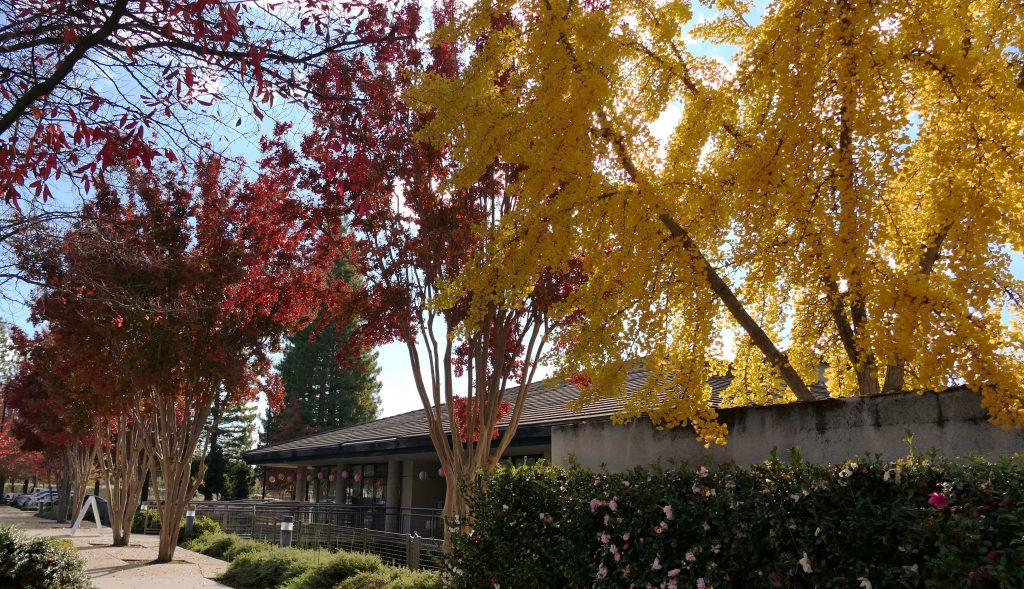
Introduced to Japan over a thousand years ago, the ginkgo is the oldest living tree species in the world. Renowned for their longevity, ginkgoes can live for thousands of years and are often found on the grounds of Shinto shrines, where they are sometimes venerated as sacred trees or homes to spirits.
The characteristic fan-shaped leaves and gold fall color of the ginkgo are unmistakable and can be found throughout Japanese iconography – in fact, the seal of the city of Tokyo is a green ginkgo leaf.
Ginkgo trees can be male or female – males producing pollen and females producing fruit. Although the flesh of the fruit is caustic and has a distinct and unpleasant odor, the seed inside is considered a seasonal autumn delicacy.
Japanese Maple

Japanese maples have long appeared in Japanese art and literature, and for that reason are also often prized as specimen trees in Japanese gardens. Due to their relatively small size and delicate leaves, they are sometimes used in literature to represent restraint and seclusion, but perhaps the strongest imagery of the Japanese maple comes from its fall color.
The fleeting but brilliant reds and oranges of the Japanese maple in fall lead to its use as a symbol of beautiful change and cherished memories, whereas the dried, fallen leaves in winter are often used to evoke a feeling of sentimentality.
Japanese maples themselves are not ideally adapted to the hot, dry Central Valley climate and sometimes struggle during the heat of summer, but we feel that ours wouldn’t be a proper Japanese garden without one!
Tsukiyama (Mountain)
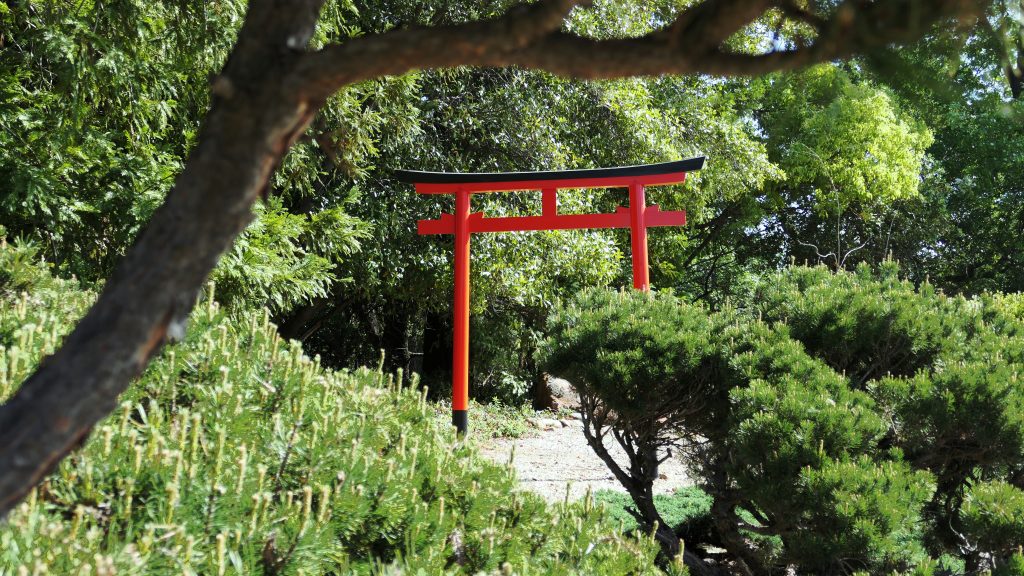
Mountains feature prominently in traditional Japanese spiritual beliefs, where they are often seen as home to the gods or kami, and are even sometimes venerated as kami in and of themselves. Because of this, Japanese gardens often include a tsukiyama – a mound of piled earth meant to represent a mountain, thereby conferring similar blessings on its surroundings.
Kyoto City, where Gekkeikan was founded, is bounded on three sides by mountains. The most prominent of which is Mount Hiei, which sits to the Northeast of the city. According to Japanese geomancy, evil spirits and bad fortune flow from the Northeast, so Mount Hiei, standing in the path of that flow, is seen as a guardian and protector of the city.
Like Mount Hiei, our garden’s tsukiyama also sits on our Northeast side, watching over us.

